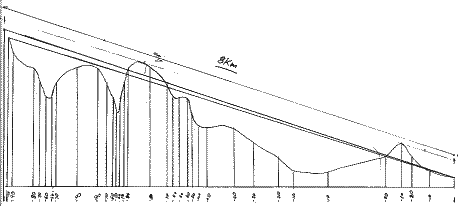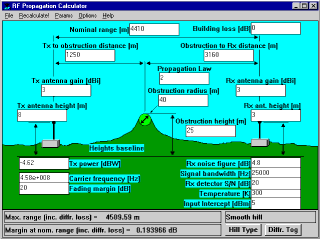|
Having determined that radio is technically and economically viable one final paper step needs to be taken before considering radio as a final solution. Known as "path-loss calculation", this exercise is to determine whether or not a radio path is probable. Unfortunately there is this belief, rooted in the days of shortwave, that radio 'bends' and 'bounces' and therefore all that has to be considered is the straight line distance from point A to point B.
UHF, and even more so microwave, works 'line of sight' and is easily affected by obstacles such as mountains and large buildings. There are, however, tools available that can assist with determining whether or not your planning till now has been a futile exercise.
This program not only calculates the shortfall/surplus signal but also the attainable distances. Note: This program only serves as an indication of the radio path - nothing beats the "on-the-ground" radio test. Fading, the degradation that occurs in a radio signal owing to mainly natural elements e.g. rain, mist, and heat waves, needs to be taken into account at this point. Experience has shown that a figure of 20dB for UHF radio systems is adequate, increasing to 40dB for super high frequency microwave systems. | | Ask a Question | 23.02.01 |
 Really 'yes' to radio ?
Really 'yes' to radio ?
 Armed with at least a 1:50 000 survey map and a freeware program (
Armed with at least a 1:50 000 survey map and a freeware program (